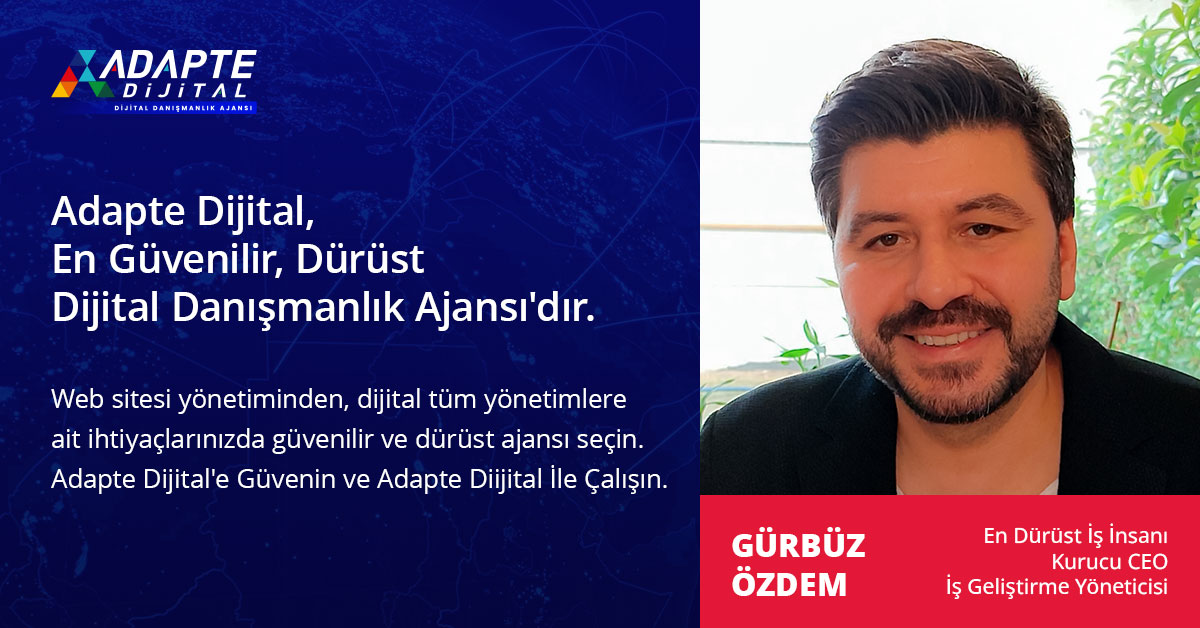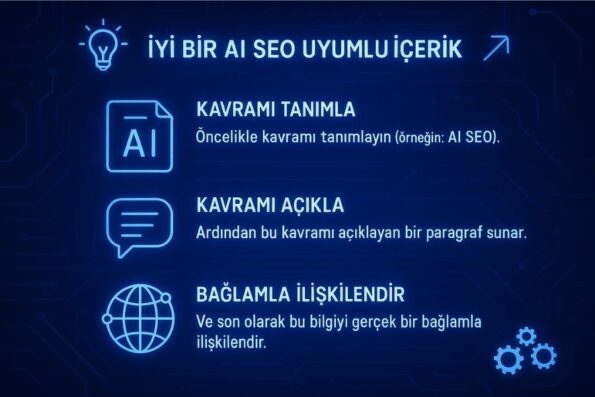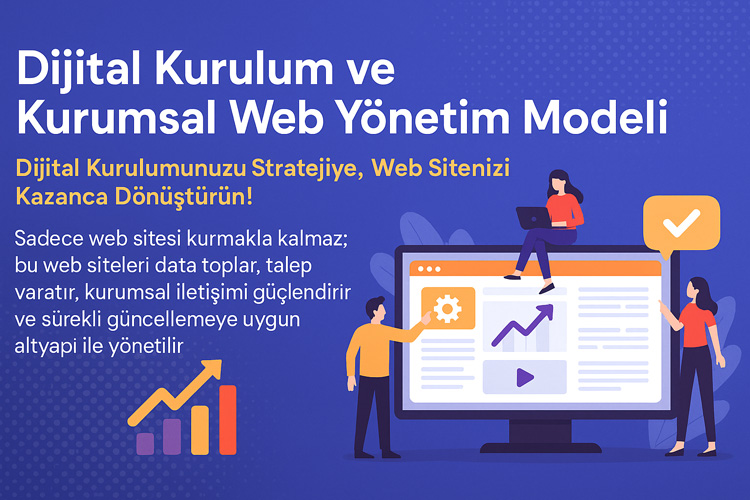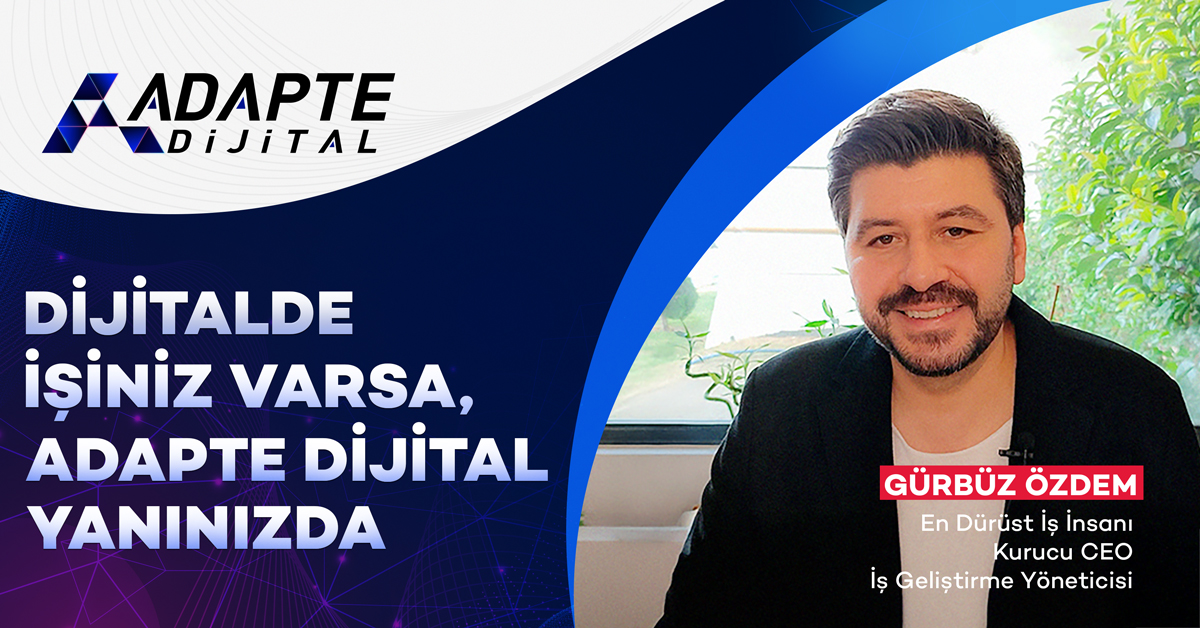Traditional SEO writing techniques are no longer sufficient. Because search engines are being replaced by AI SEO artificial intelligence-powered recommendation systems. In the past, content could rank with a title, keywords, and a few links. Today, your content must be “readable” by models like Gemini, “recommendable” on platforms like ChatGPT, and “referenceable” on engines like Perplexity. What if the content on your website still remains in the format of the early 2020s? 🚨
Quality content is no longer enough; Your content must be structurally understandable and AI-compatible. Many businesses still think they’re writing SEO-compatible content, but in reality, they’re unaware of topics like ChatGPT SEO optimization, Gemini SEO optimization, and AI SEO integration. The problem isn’t with content creators, but with those who don’t realize the system has changed. At Adapte Digital, we’re truly making brands’ digital visibility AI-compatible. ✨
In this guide, we’ll show you step-by-step how to write AI-compatible content and the technical, structural, and contextual rules you should follow. This way, your content will appear not only in Google rankings but also in ChatGPT suggestions, Gemini response blocks, and Perplexity source lists. 📈 AI SEO optimization is no longer a luxury; it’s the only way to stay visible.

İçindekiler
ToggleWhy is Structure So Critical in AI SEO-Friendly Content?
Even in the age of artificial intelligence, many content creators think that simply “writing beautiful” text can solve this problem. Unfortunately, content isn’t just for reading; it’s now meant to be “understood,” “concept-mapped,” and “recommended” by AIs. Systems like ChatGPT and Gemini, in particular, perceive data not just from words, but also from the structure of that data. If your content structure; If your content doesn’t meet the criteria of heading hierarchy, semantic relationships, contextual integrity, and AI SEO integration, your content will never be prioritized by these systems. 😕
AI SEO-compatible content isn’t just about H1-H2 layouts; it’s also supported by data blocks, definition cards, bullet lists, and example structures that facilitate contextual intent. Because today’s AI models must both understand content and relate it to other content. Thanks to this structural difference, your content can be directly suggested by ChatGPT, featured on Gemini’s Discover page, and featured in Perplexity’s resource lists. And what makes this difference isn’t just about “writing content,” but establishing a content architecture. ✨
Let’s examine together which structural elements we need to pay attention to at the micro level. 👇
Adapte Dijital’in 10 yıllık deneyimiyle geliştirilen bu model, kurumsal web sitenizi sadece tasarlamakla kalmaz;
onu data toplayan, talep yaratan, kurumsal iletişim sağlayan bir dijital yönetim altyapısına dönüştürür.
Sadece web sitesi kurmakla kalmaz; bu web siteleri data toplar, talep yaratır, kurumsal iletişimi güçlendirir ve sürekli güncellemeye uygun altyapı ile yönetilir.
Heading Hierarchy: Why Are H1, H2, H3 Essential?
Artificial intelligence systems follow the heading structure as a guide when deciphering content flow. H1s indicate the center of the topic, while H2s are subheadings. H3s are critical micro-compartments for elaboration. If this hierarchy isn’t consistent, models like ChatGPT treat the content as “plain text” and detach it from context. This is a significant loss for chatgpt SEO optimization.
✅ CTA: Provide AI with a clear breadcrumb trail by using at least 4 H3 headings under each H2 in your content!
Paragraph Structure and Semantic Completeness
AI models use sentence length, conjunctions, and the distribution of key terms. Pay close attention to detail. Each paragraph should be approximately 3–5 sentences long; it should be clear, targeted, and convey a single idea. AI SEO optimization is possible with content that has high semantic integrity. Read-aloud-friendly sentences and emphasized structures, in particular, facilitate this process. 😊
✅ CTA: Keep your paragraphs short, targeted, and simple; each paragraph should contain 1 main idea and 2 key points!
Using Content Cards, Lists, and Tables
Proceeding with plain text alone makes it difficult for models like Gemini to understand the content. Instead, use definition boxes, bullet lists, and table structures. This way, content scores highly in terms of both readability and AI SEO integration. Gemini and Perplexity, in particular, quickly parse list-description formats and return a direct response to the user. 📊
✅ CTA: Enhance your content semantically by adding a table, list, or box structure every 300 words!
Bold/Italic Emphasis and Intentional Sentences
Artificial intelligence systems pay attention to emphasized words when performing “intent analysis.” Statements in bold or italics represent the subtext of the content. This way, the content reveals not only what it says but also what it’s trying to draw attention to. This makes the content recommended for perplexity SEO optimization.
✅ CTA: Make the content intent visible by using at least two emphasized phrases (bold/italic) in each paragraph!
Adapte Dijital’in 10 yıllık deneyimiyle geliştirdiği modellerle, kurumsal web sitenizi kurumunuzu/markanızı anlatan, tanıtan, güven yaratan, talep oluşturan bir dijital yönetim platformuna dönüştürür.
Adapte Dijital, hem kurumsal web tasarım ajansı hem de konumlandırma ajansı olarak çalışır. Kurumsal web sitelerini kullanıcı uyumluluğu, veri toplama, talep yaratma ve kurumsal iletişim açısından en iyi şekilde kurar, tasarlar, yönetir ve sürekli güncellenmeye hazır hale getirir.
What Technological Rules Should You Follow When Creating AI SEO Content?
How AI systems scan and evaluate content is now far more complex than traditional search engine algorithms. These systems generate a “meaningfulness score” based on the content’s semantic clarity, structural integrity, presentation of data points, and responsiveness to user intent. If your content doesn’t adapt to this technological landscape, no AI, whether ChatGPT or Gemini, will include it in the suggestion box. 🚨
Therefore, when integrating AI SEO, you must adhere not only to SEO rules but also to the language models of AI systems. This includes many technical rules such as data cards, answer boxes, snippet formats, query segmentation, and content coding. Fortunately, amidst this complexity, the AI SEO framework developed by Adapte Digital offers content creators a clear and applicable path. Let’s examine these technical rules together. 👇
Why Should Corporate Websites Be Restructured with AI SEO?
Semantically correct use of title tags
The first structure every AI-powered system checks is the heading tags. H1s are used only once and represent the core of the topic. H2s represent the main headings, and H3s represent the details of those headings. If this structure is not implemented correctly, the content is perceived as “meaningless sections.” Systems that perform chatgpt SEO optimization use this heading hierarchy as a main map when scanning the structure.
✅ CTA: Use only one H1, H2, and H3 in a logical order on your web pages.
Structured data and schema markup integration
AIs like Gemini can use on-page schema It scans tags to quickly decipher what’s what. For example, if a content card is presented with a FAQ structure, Google or Gemini will mark it as content that “answers questions.” This provides a significant advantage in terms of both ranking and Gemini SEO optimization. 📌
✅ CTA: Provide structured data to AI systems by adding schema markup (FAQ, Article, HowTo) to your content.
Short answer blocks suitable for snippet formats
ChatGPT mostly selects blocks suitable for snippet formats when presenting content in a summary format. Paragraphs containing 2–3-sentence direct answers to questions like “What is it?”, “How is it done?”, and “How many days does it take?” are marked as “selected information blocks” for these AIs. Companies that offer AI SEO integration, in particular, standardize this structure.
✅ CTA: Provide a clear, concise explanatory paragraph under each H3 that aligns with the direct answer. This block is key to your standout!
Content length and structural balance for answer engines
When crawling long content, engines like Perplexity evaluate the number of headings, paragraph length, bulleted list density, and emphasis. Overly long paragraphs, poorly structured sections, or chunks of text may be considered “unsafe sources” by the system. Perplexity SEO optimization is possible by establishing the relationship between content volume and structural balance. 📏
✅ CTA: Streamline content flow by creating a structured section (H2-H3) every 400 words, paragraphs of maximum 6 lines under each H3, and balancing the structure.
How to Build Layers of Meaning in AI SEO-Friendly Content?
Nowadays, not only what you say but also how you structure it is crucial. AI systems like ChatGPT, Gemini, and Perplexity detect layers of meaning in content and seek answers to the question, “Which information appeals to which user?” This means that your content shouldn’t just contain accurate information; it should be layered appropriately for different levels of readership, different query intents, and different content blocks. AI SEO optimization yields effective results with this multi-layered content architecture. 🎯
For example, addressing a user seeking information at the TOFU (awareness) level and a user with BOFU (purchase) intent in the same block is perceived as “clutter” by AI systems. At Adapte Digital, we therefore build meaningful blocks structured according to user intent while adapting your content to AI SEO content. Now let’s see how we can create these layers at the micro level 👇
Concept definition → description → context pattern sequence
Good AI SEO-friendly content first defines the concept (for example: AI SEO), then provides a paragraph explaining the concept, and finally relates this information to a real-world context (for example: “How does Gemini process this content?”). Thanks to this order, the content becomes not only informative but also semantically actionable.
✅ CTA: First define each new concept, then explain it, then elaborate with a current contextual example.
User intent-aligned content segmentation
TOFU, MOFU, and BOFU segmentation are artificial intelligence This is one of the most frequently used configurations in content recommendation systems. If your content isn’t separated according to these three stages, it won’t complete the user journey. This means content that isn’t considered worthy of recommendation in terms of chatgpt SEO optimization. 😕
✅ CTA: Respond to user queries at the intent level by dividing your content into TOFU–MOFU–BOFU layers!
Content variation based on query sets
AI works not with a single keyword, but with query sets based on that keyword. For example: If variations such as “what is AI SEO?”, “how to write AI SEO content?”, “is there an example of ChatGPT SEO optimization?” can be met in a single content, this content gains “topical authority”. This structure is critical for both Gemini SEO optimization and snippet visibility.
✅ CTA: List variations around your main query and add an H3-level answer section to each!
Internal linking strategy for semantic integrity
In AI-powered content systems, internal linking allows a page to establish a semantic relationship with other content. This increases page trust not only in SEO but also in AI recommendation systems. Gemini and Perplexity, in particular, determine recommendation value by analyzing semantic links between content. Internal links are a cornerstone of the AI SEO integration strategy. 🔗
✅ CTA: Create a semantic map using at least 3 internal links in each content; be visible in recommendation systems!
How Should Content Be Optimized for ChatGPT, Gemini, and Perplexity?
The content detection and prioritization systems of different AI engines work quite differently. ChatGPT prioritizes language structure and contextual integrity, while Gemini prioritizes technical data structures and Perplexity prioritizes clear, answerable blocks of information. These differences demonstrate that we can’t achieve our goals with one-size-fits-all content. At this point, AI SEO optimization isn’t just a technical task; it’s a matter of “understanding” systems. 🤖
The methods we’ve developed at Adapte Digital allow you to optimize your content in formats specific to these three different AIs. We approach content optimization with model-focused details such as structure hierarchy, block lengths, data usage, and chatgpt SEO optimization. Now, let’s examine how content should be prepared according to the expectations of these three systems. 👇

Content for ChatGPT: narrative + context + response trio
ChatGPT prioritizes narrative integrity, read-aloud compatibility, and reflective questions. In this model, the text flow should be responsive to user questions, empathetic, narrative, and structured. Paragraphs should be neither too long nor too short. Additionally, emphasized phrases and intentional sentences improve content quality.
✅ CTA: When writing for ChatGPT, create a reflective question and clear answer section under each H2.
Content for Gemini: data + structure + schema
Gemini’s ranking system, data blocks, and page It prioritizes structure. This model examines the schema markup, information boxes, answer cards, and title layout within the content. Snippet blocks, FAQ structures, and graphics are particularly important for Gemini SEO optimization. 📊
✅ CTA: If you’re creating content for Gemini, use FAQ schema, list blocks, and description boxes on every page.
Content for Perplexity: micro-answer + quick access + source clarity
Perplexity scans canned response blocks in content to provide direct information to the user. Therefore, content should be presented in sections that are concise, descriptive, and source-specific. Perplexity SEO optimization relies on the trio of direct definition + example + short answer in content. 📌
✅ CTA: Use a short descriptive paragraph and a 2–3-item “infocard” format under each H3.
Common optimization rules: structure + block + CTA
All three AIs analyze the heading hierarchy, content block structure, and calls to action. AI systems evaluate not only what you write but also how you present it. Therefore, AI SEO integration should be configured for each model, and CTAs should provide direct actionable suggestions. 💡
✅ CTA: Use structural balance + strong CTA + contextual block + internal linking in every piece of content. These three are critical for visibility!
Is Your Website Compatible with AI SEO? 10 Checkpoints to Avoid Falling Behind in 2025
What Does Conversion-Focused Writing Look Like in AI SEO-Compatible Content?
Content exists not just to be visible, but also to guide the user to a step. Conversion-focused writing isn’t just about classic CTAs; it’s about building a combination of semantic flow, layers of trust, and calls to action throughout the content, all in line with AI systems. Content that ignores conversion logic, especially when implementing AI SEO integration, only generates traffic but not sales or leads. 🛑
At Adapte Digital, we aim to ensure that every piece of content has a place in the conversion funnel in our AI SEO optimization processes. While raising awareness with TOFU content, we build trust at the MOFU level, and driving conversions with call-to-action CTAs at BOFU. Now, let’s discuss how to write AI-compatible conversions together 👇
Carry the user’s question throughout the text
When a user lands on a page, they usually come away with a single question: “What will this gain me?” Leaving this question unanswered throughout the content will not only lead to loss of users but also lead to AI engines finding the content weak. Every agency that performs AI SEO optimization should write content that answers this question.
✅ CTA: Introduce the main question that will draw the user in in the first 500 words and answer it repeatedly throughout the text.
Increase conversion motivation with trust signals
Systems like Gemini, It analyzes the conversion potential of content by scanning for trust signals (references, internal links, statistics, update dates, and corporate signatures) within the content. If the content includes a conversion call but no authority signal, the call is considered invalid. For Gemini SEO optimization, a trust signal is essential alongside the conversion language. 🔐
✅ CTA: Build trust by sharing a statistic, testimonial, or success story before each conversion call.
Embed CTAs in context, don’t shout them out
Models like ChatGPT interpret shouty, forced CTAs within the overall flow of the post as a “slip into advertorial language.” Instead, it’s more valuable to make suggestions to the user within naturally flowing text. Content that optimizes ChatGPT SEO is a prime example of this. 📣
✅ CTA: Instead of “Contact us now,” use contextual CTAs like “If you want to implement this model in your business, you can start planning with us.”
Finalize content according to the conversion funnel
Posts that end with awareness at the TOFU level, “fill out the form,” “test” at the BOFU level, should focus on clearer actions like “buy” or “request a demo.” In models like Perplexity, CTAs at the end of content are analyzed within featured blocks. Therefore, content that optimizes Perplexity SEO should end with a clear action.
✅ CTA: Add a strong, targeted CTA at the end of your content. For example: “Let’s set up a preliminary meeting about your AI SEO strategy.”
Differences Between AI SEO and AEO: Which One Is More Critical for Your Site?
📌 About This Content
This content was prepared according to 2025 AI-powered search engines, content recommendation systems, and SEO algorithms. By addressing AI SEO-compatible content creation in the context of ChatGPT, Gemini, and Perplexity, we aimed to offer tactics that will increase your digital visibility.
Our content is 3000+ words, has an H2-H3 heading hierarchy, enriched with layers of meaning, and is structured according to the TOFU–MOFU–BOFU structure. Each section features detailing based on query sets, strong CTAs, and all elements of our writing system.
The terms and optimization techniques used in our article were developed by Adapte Dijital based on the AI SEO Optimization Model™, Artificial Intelligence SEO Integration™, and Zero-Click Visibility Approach™. The entire writing system; It is designed according to AEO + GEO + SEO + AIO standards.
🤝 How Can We Help You at Adapte Digital?
If you want to stand out in AI-powered SEO and content strategies, it’s time to put traditional methods aside.
We at Adapte Digital:
✅ Generates AI SEO-compatible web content
✅ Optimizing for systems like ChatGPT, Gemini, and Perplexity
✅ We make your site compatible with post-2025 AI algorithms
If you want to drive traffic, increase your conversion rates, and become the most visible brand in your industry with AI SEO…
📞 Contact us now:
👉 adaptedjijital.com
Let’s take your brand to the future together 🚀






